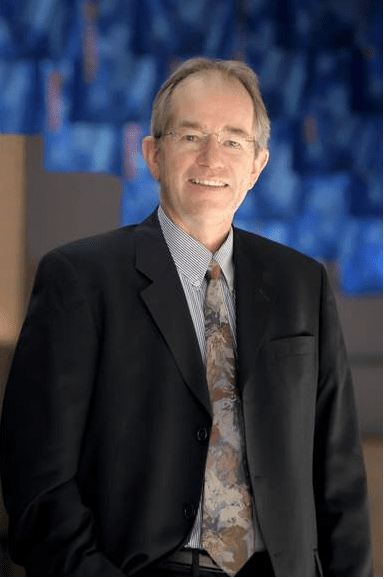Jun 24 2019
Researchers from The University of Texas at Arlington (UTA) are collaborating with the Army Research Laboratory to create nanophotonic devices that could be used in thermal imaging and resonant filtering.
 Robert Magnusson (Image credit: The University of Texas at Arlington)
Robert Magnusson (Image credit: The University of Texas at Arlington)
Robert Magnusson, an electrical engineering professor and the Texas Instruments Distinguished University Chair in Nanoelectronics, is the chief investigator for a $1.2 million joint agreement with the Army Research Laboratory.
Nanophotonic devices are used to form the spectrum of light through photonic lattices and resonance, but their application mostly has been restricted to short wavelengths. The research team is attempting to design devices that will function in the longwave infrared spectral zone, which is the range in which thermal radiation is released. Apart from thermal imaging technology, these devices could be used in sensors for chemical analyses, medical diagnostics, and environmental monitoring, amongst other applications.
“We have made many advances in the development of photonic devices over the years, and our methodology can be really useful in this application,” Magnusson said. “There is a need to develop this technology because there is a shortage of optical components in longwave infrared bands. Changing frequency or wavelength to this region requires that we completely change our fabrication methods, and we have already successfully made devices under this new funding.”
Photonic lattices are assemblies—such as nanopatterned silicon films on glass substrates or assortments of nanowires—with opposing refractive qualities that are set up so they can capture, store, and discharge light. For the new, longer wavelength devices, Magnusson will develop lattices using germanium, a metalloid element that possesses the properties of a semiconductor.
Daniel Carney, a recent UTA doctoral graduate, effectively created longer wavelength devices in the University’s Shimadzu Institute Nanotechnology Research Center while a student in Magnusson’s lab. Magnusson said he aims to adapt these devices to make them modifiable to specific wavelengths. By electrically or mechanically varying the device’s structure, selected wavelengths are rejected while beneficial imaging data is transmitted to the detection equipment.
“The Shimadzu Institute Nanotechnology Research Center was very important in the development of Daniel’s research and what we’re trying to do with the Army Research Lab,” Magnusson said. “The facility is behind experimental realization of many of the key discoveries we make.”
Magnusson, Neelam Gupta of the Army Research Laboratory and Mark Mirotznik of the University of Delaware are partnering on the research. Their project is an example of data-stimulated discovery, one of the subjects of UTA’s Strategic Plan 2020, said Peter Crouch, dean of the College of Engineering.
As engineers, we always want to have an impact on society. Dr. Magnusson’s research has been at the leading edge of his field for many years, and his findings have contributed a great deal to our knowledge of photonics. This agreement with the Army Research Lab is an excellent opportunity to create devices that will make an impact for years to come.
Peter Crouch, Dean of College of Engineering, UTA
Magnusson has been involved in photonics all through his career and initiated numerous device technologies, many of which are patented. He heads UTA’s Nanophotonics Device Group, which pursues theoretical and experimental research in periodic nanostructures, nanophotonics, nanolithography, nanoplasmonics, nanoelectronics, and optical bio- and chemical sensors. His research helped set up the new transformative biosensor platform technology that is commercialized by Resonant Sensors Inc., a company he co-founded.
Magnusson has managed to raise more than $12 million in research funding and endowments for UTA since becoming the Texas Instruments Distinguished University Chair in Nanoelectronics in 2008, published over 450 journal and conference papers, and secured 35 issued patents and pending patents.
He is a charter fellow of the National Academy of Inventors—one of 15 NAI fellows among the UTA faculty—and a Life Fellow of the respected Institute of Electrical and Electronics Engineers. The IEEE has selected Magnusson for his contributions to the invention of a new family of nanophotonic devices that utilize light at a nanometer scale. His devices are employed as tunable filters lasers, biosensors, and optical components.
UTA’s Department of Electrical Engineering is pleased to have several leading scientists in the field of photonics besides Magnusson:
- Weidong Zhou is involved with quantum sensors for identifying diseases and unsafe gases in the air, as well as on-chip systems for application in healthcare applications.
- Michael Vasilyev is interested in quantum optic communications to facilitate secure data transmissions and highly efficient internet connections
- Alice Sun works with lasers to design sensors that detect dangerous gases in the air, as well as portable sensors that can be used to non-invasively detect cancer and other diseases in a doctor’s office.
The department’s faculty carry out research in numerous areas, such as electrical power systems, radar and wireless sensor networks, microgrids, energy storage, sensors and robotics, photonics, power conversion and control, unmanned vehicle systems, implantable sensors and systems, human performance and signal processing and machine learning.